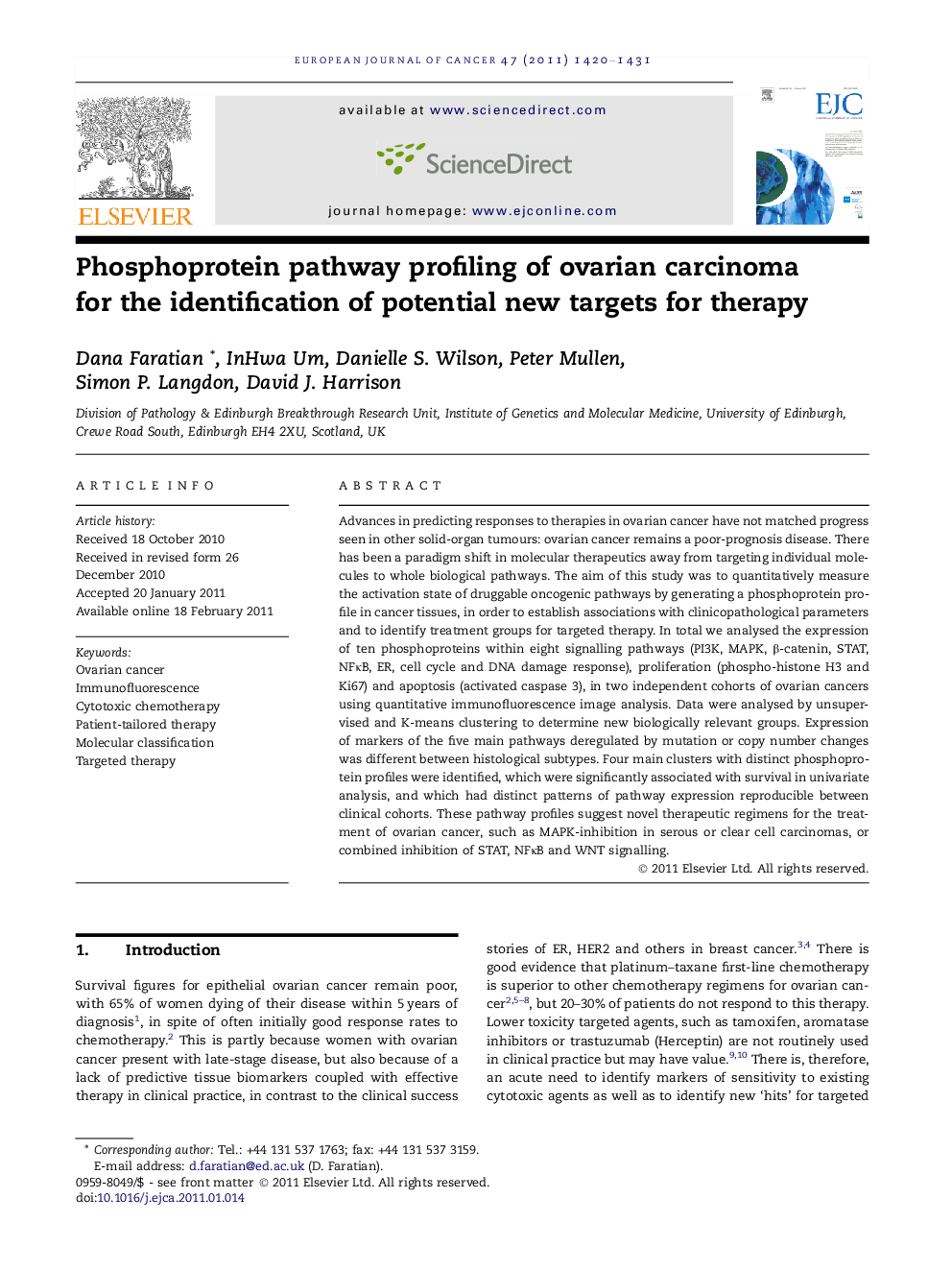| Article ID | Journal | Published Year | Pages | File Type |
|---|---|---|---|---|
| 8447481 | European Journal of Cancer | 2011 | 12 Pages |
Abstract
Advances in predicting responses to therapies in ovarian cancer have not matched progress seen in other solid-organ tumours: ovarian cancer remains a poor-prognosis disease. There has been a paradigm shift in molecular therapeutics away from targeting individual molecules to whole biological pathways. The aim of this study was to quantitatively measure the activation state of druggable oncogenic pathways by generating a phosphoprotein profile in cancer tissues, in order to establish associations with clinicopathological parameters and to identify treatment groups for targeted therapy. In total we analysed the expression of ten phosphoproteins within eight signalling pathways (PI3K, MAPK, β-catenin, STAT, NFκB, ER, cell cycle and DNA damage response), proliferation (phospho-histone H3 and Ki67) and apoptosis (activated caspase 3), in two independent cohorts of ovarian cancers using quantitative immunofluorescence image analysis. Data were analysed by unsupervised and K-means clustering to determine new biologically relevant groups. Expression of markers of the five main pathways deregulated by mutation or copy number changes was different between histological subtypes. Four main clusters with distinct phosphoprotein profiles were identified, which were significantly associated with survival in univariate analysis, and which had distinct patterns of pathway expression reproducible between clinical cohorts. These pathway profiles suggest novel therapeutic regimens for the treatment of ovarian cancer, such as MAPK-inhibition in serous or clear cell carcinomas, or combined inhibition of STAT, NFκB and WNT signalling.
Keywords
Related Topics
Life Sciences
Biochemistry, Genetics and Molecular Biology
Cancer Research
Authors
Dana Faratian, InHwa Um, Danielle S. Wilson, Peter Mullen, Simon P. Langdon, David J. Harrison,
